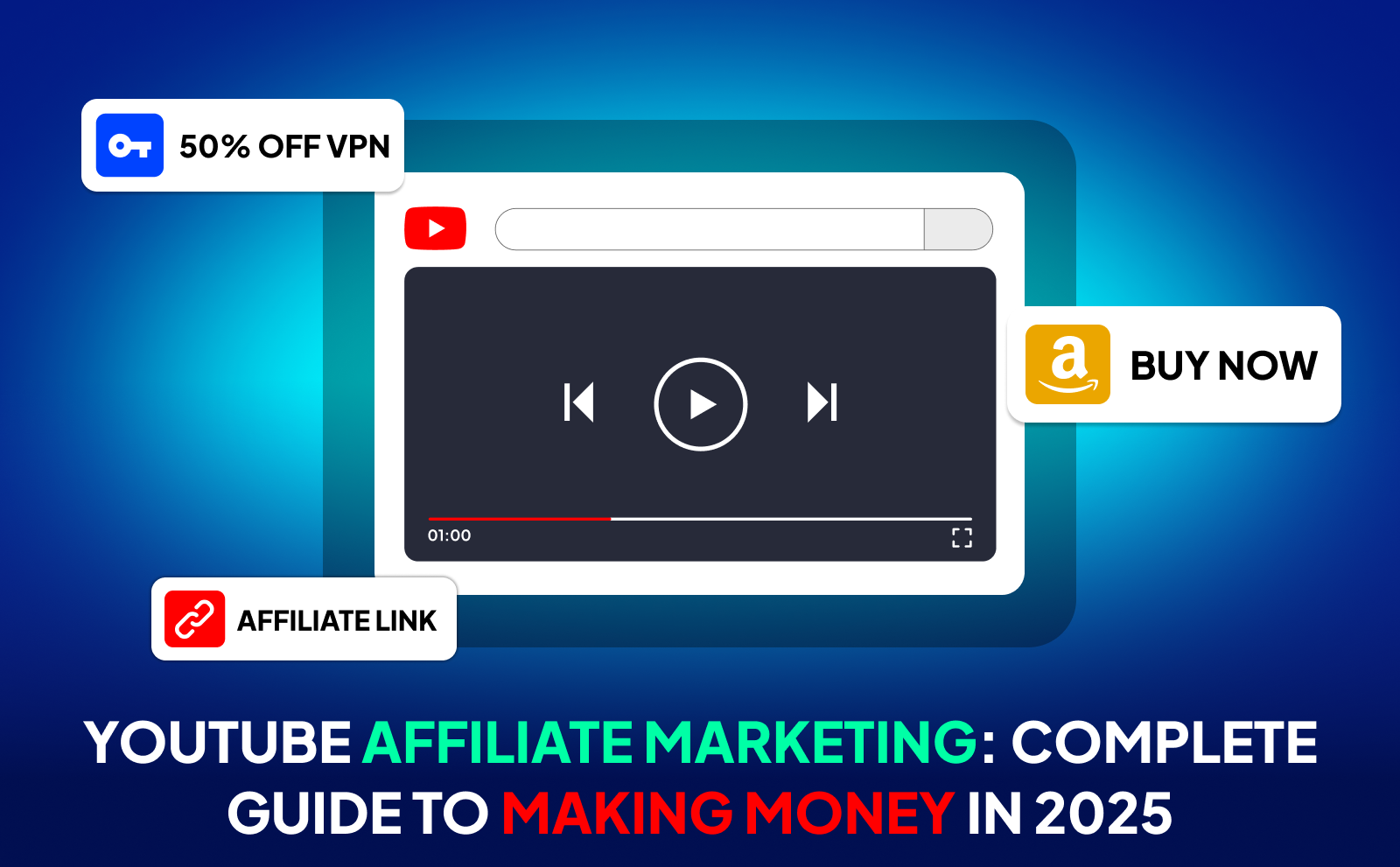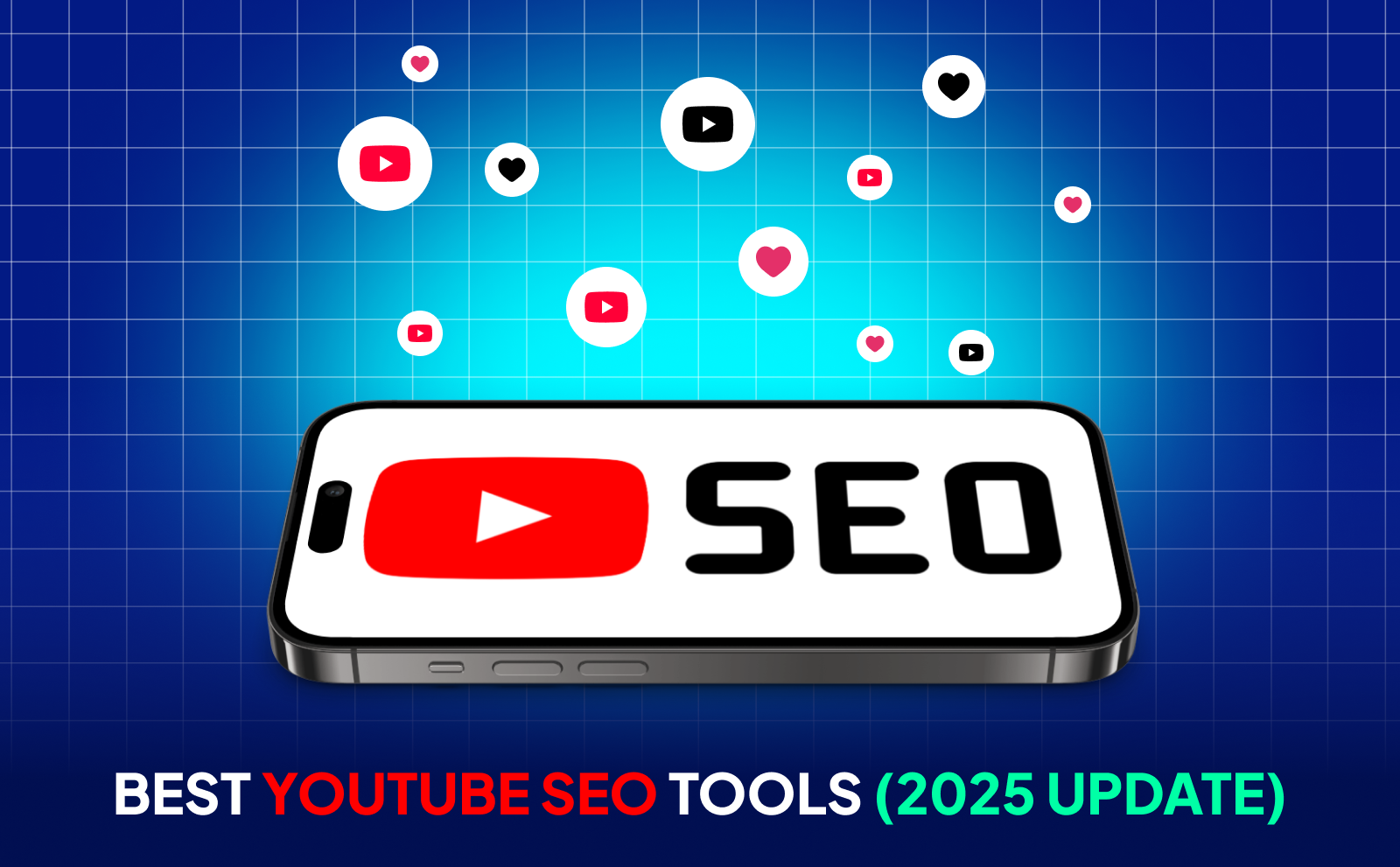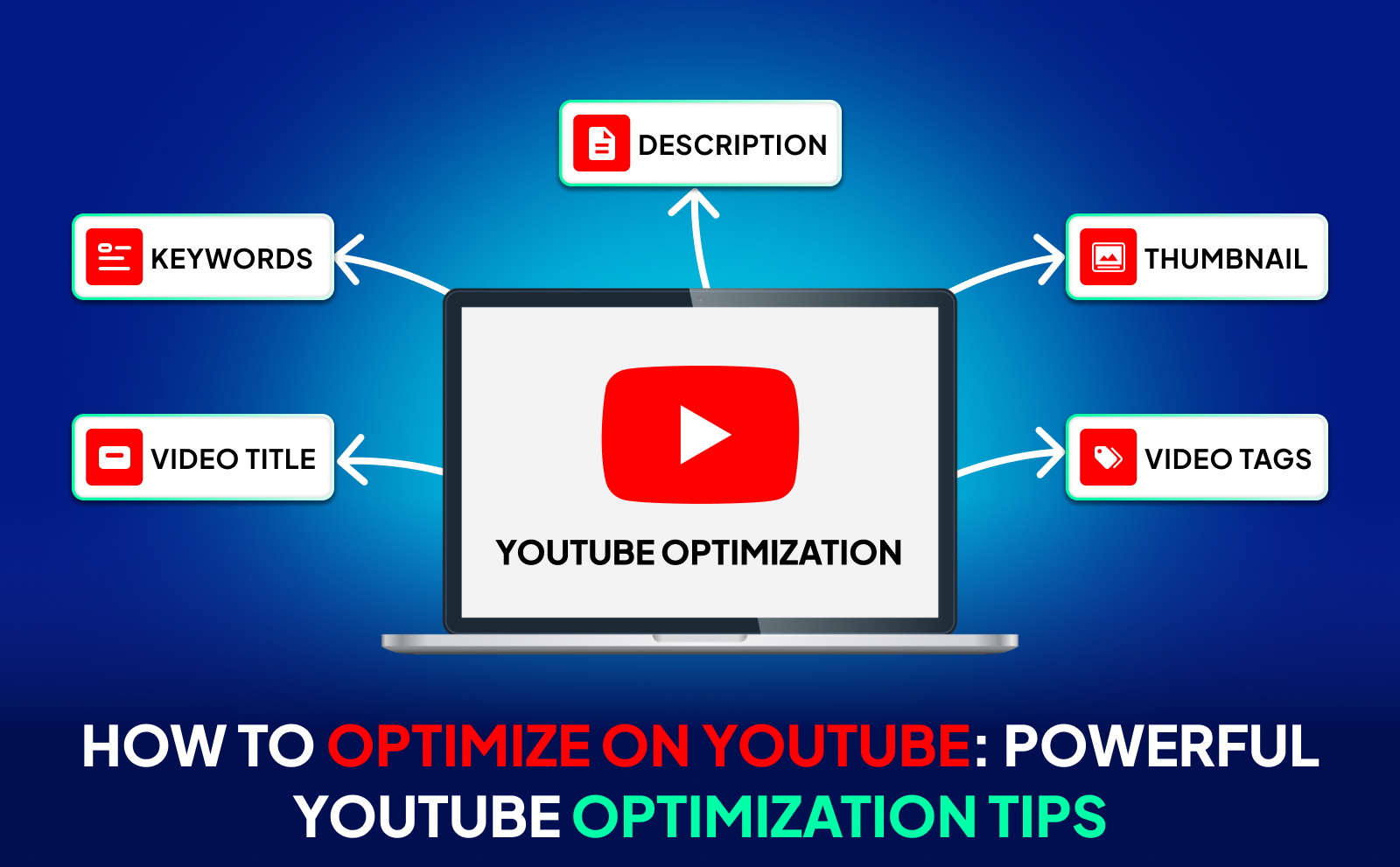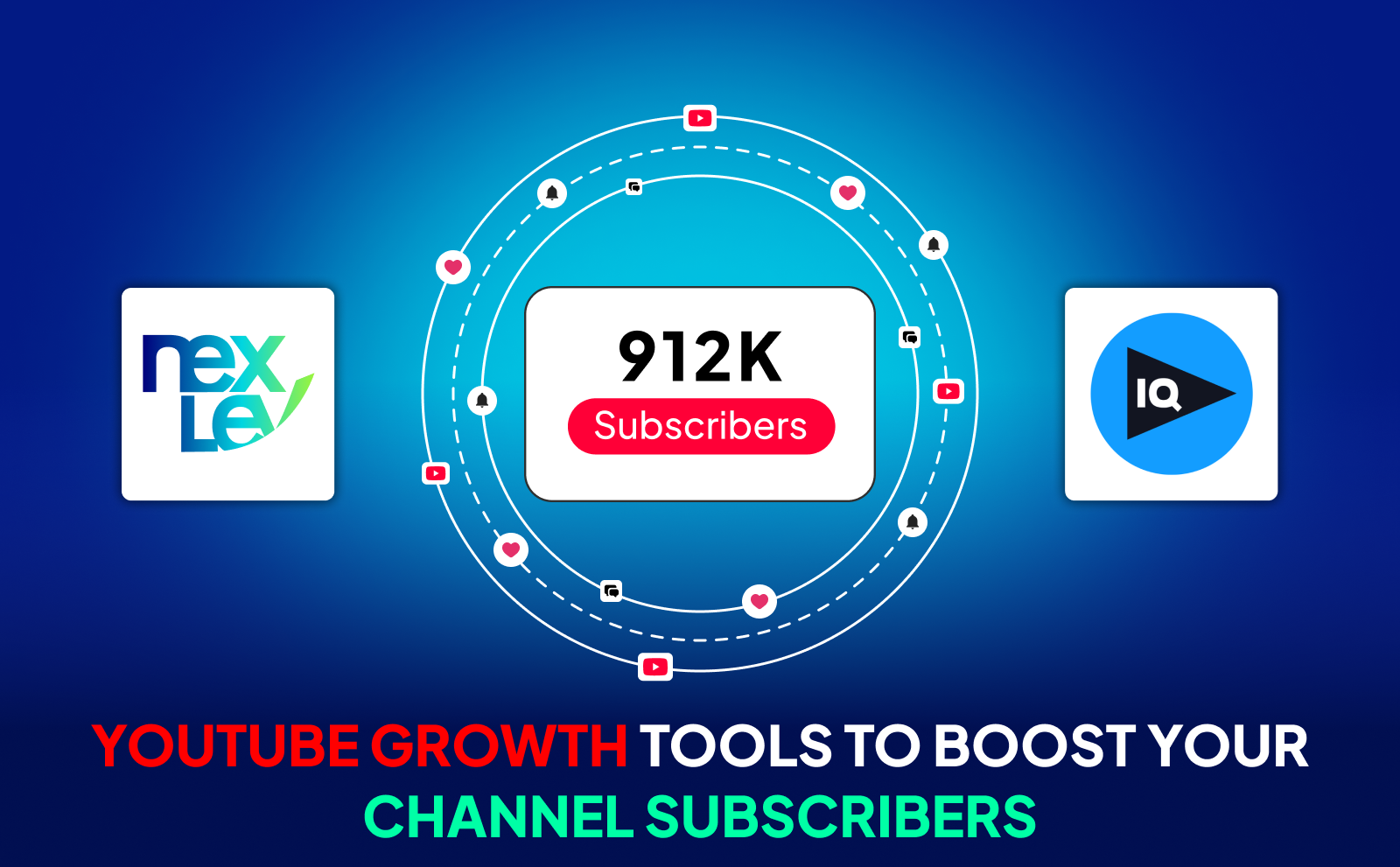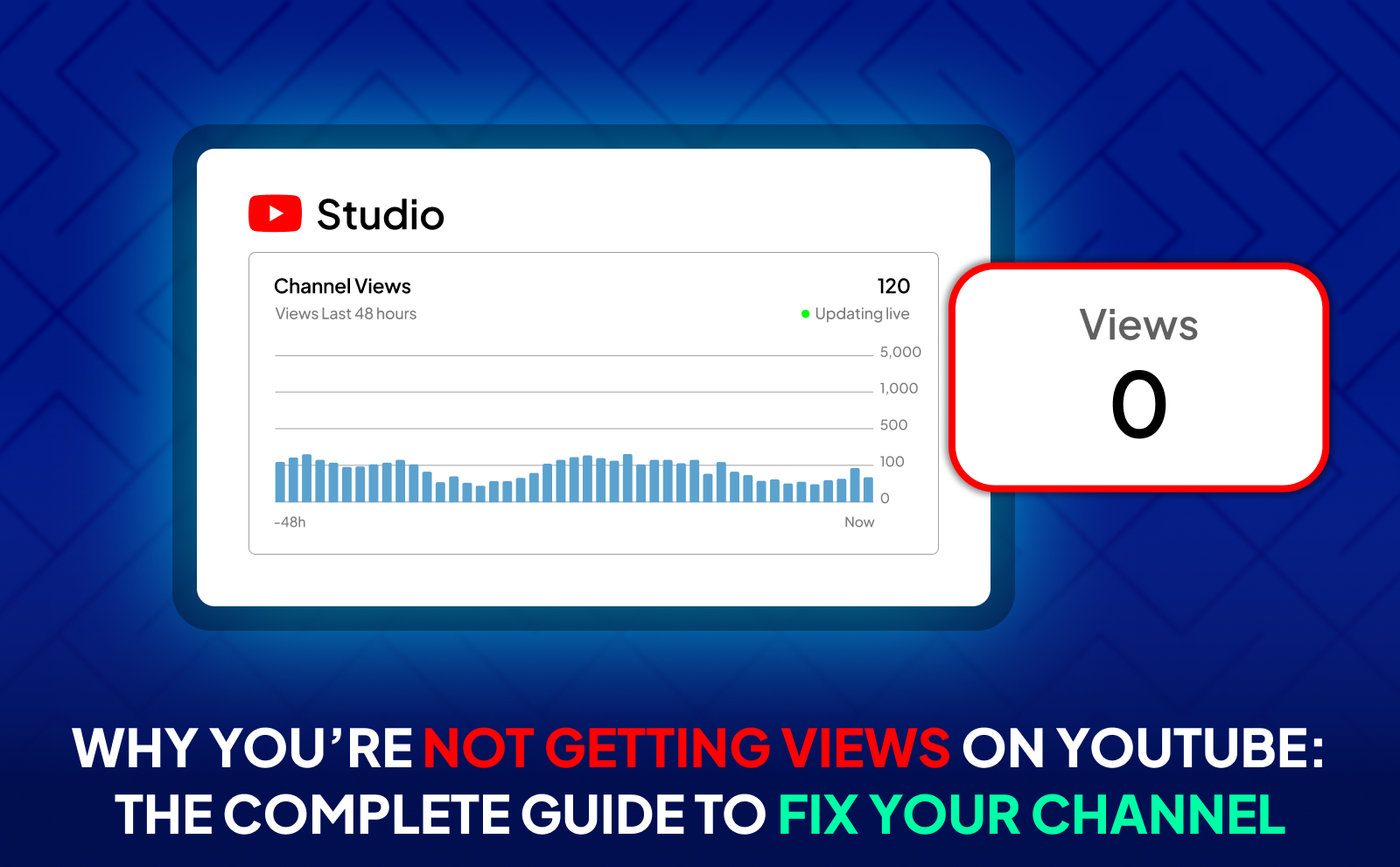
Why You're Not Getting Views On YouTube Explained Clearly
Understanding Why Your YouTube Channel Is Not Getting Views
Most people think their channel isn’t getting views because the algorithm “hates” them, but in reality it usually comes down to one thing: viewers don’t feel instantly interested in the videos. If your title and thumbnail don’t create curiosity or emotion within the first second, people just scroll past. You could make the best video in the world, but if nobody clicks, the platform never gets a chance to show it to more people. So the problem often isn’t the quality of your content. it’s the packaging.
The second reason is that viewers often leave quickly. YouTube checks how long people stay, and if most viewers drop after the first 20–30 seconds, the platform assumes your video isn’t worth pushing. This usually means your intro is too slow, your first hook isn’t strong enough, or the video doesn’t match the promise of the title. When you fix the first 30 seconds, make it visual, fast, and clear. your watch time improves, and YouTube naturally sends you more viewers.
The Harsh Reality Of YouTube Competition And Stats
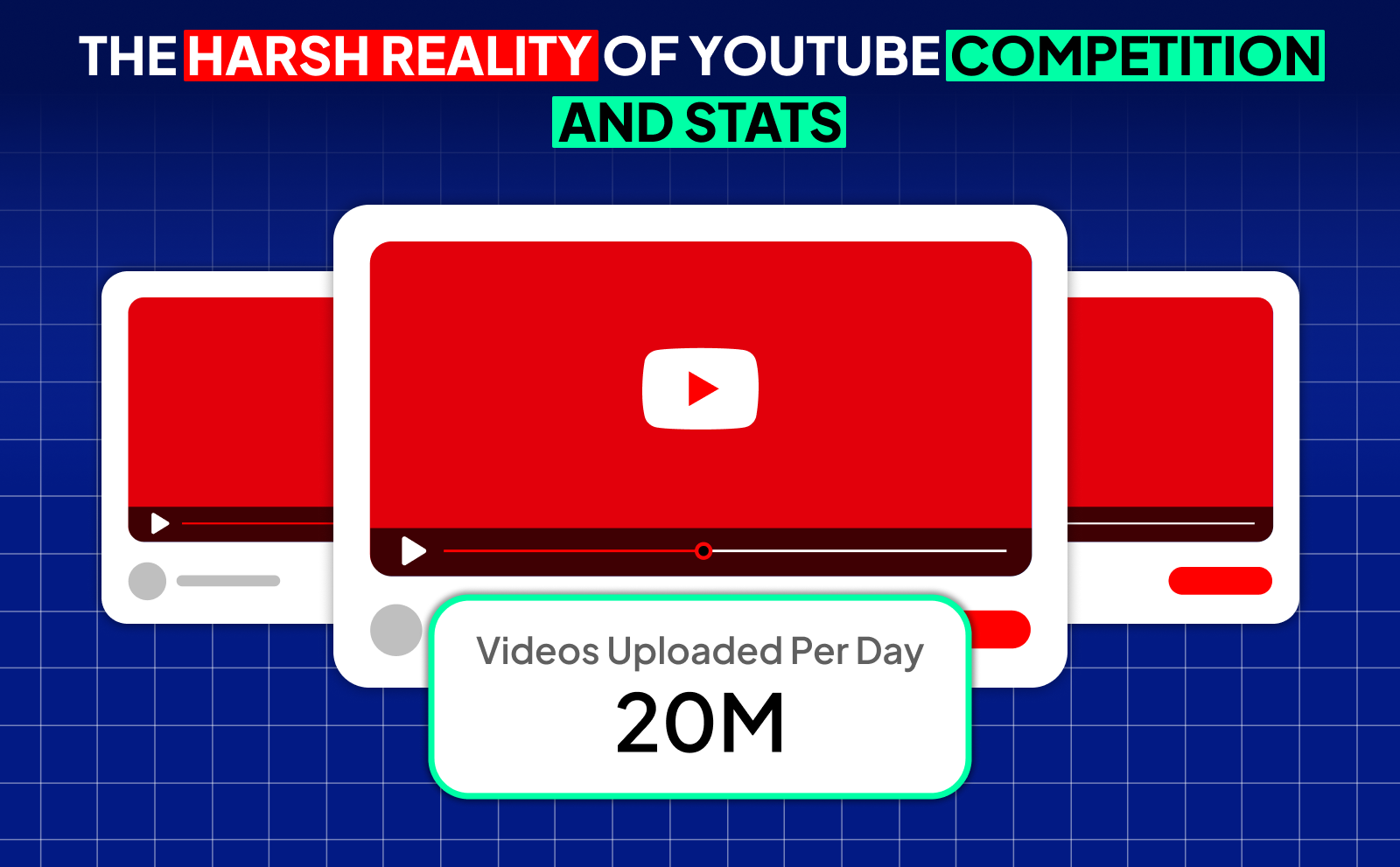
YouTube is overcrowded. Every day, hundreds of thousands of new videos drop, and the platform has to decide which ones deserve attention. The truth is that you’re not just competing with creators in your niche. You're competing with everything else a person could watch: music videos, podcasts, Netflix clips, sports highlights, memes, and even TikTok reposts. That’s why “good” content isn’t enough. You need content that stands out in the feed, hooks instantly, and keeps people watching longer than other videos around it.
The stats also don’t lie. Even huge creators have videos that flop, because the algorithm doesn’t care about your subscriber count, it cares about behavior. If your click-through rate drops even a little, or if watch time isn’t strong, YouTube slows down the video fast. This is why many creators feel like they’re “shadow banned,” when really the data shows viewers just weren’t as interested as expected. Understanding this makes YouTube feel less personal and more mechanical. and that’s a good thing, because it means you can improve your stats and get predictable results.
How The YouTube Algorithm Actually Works?
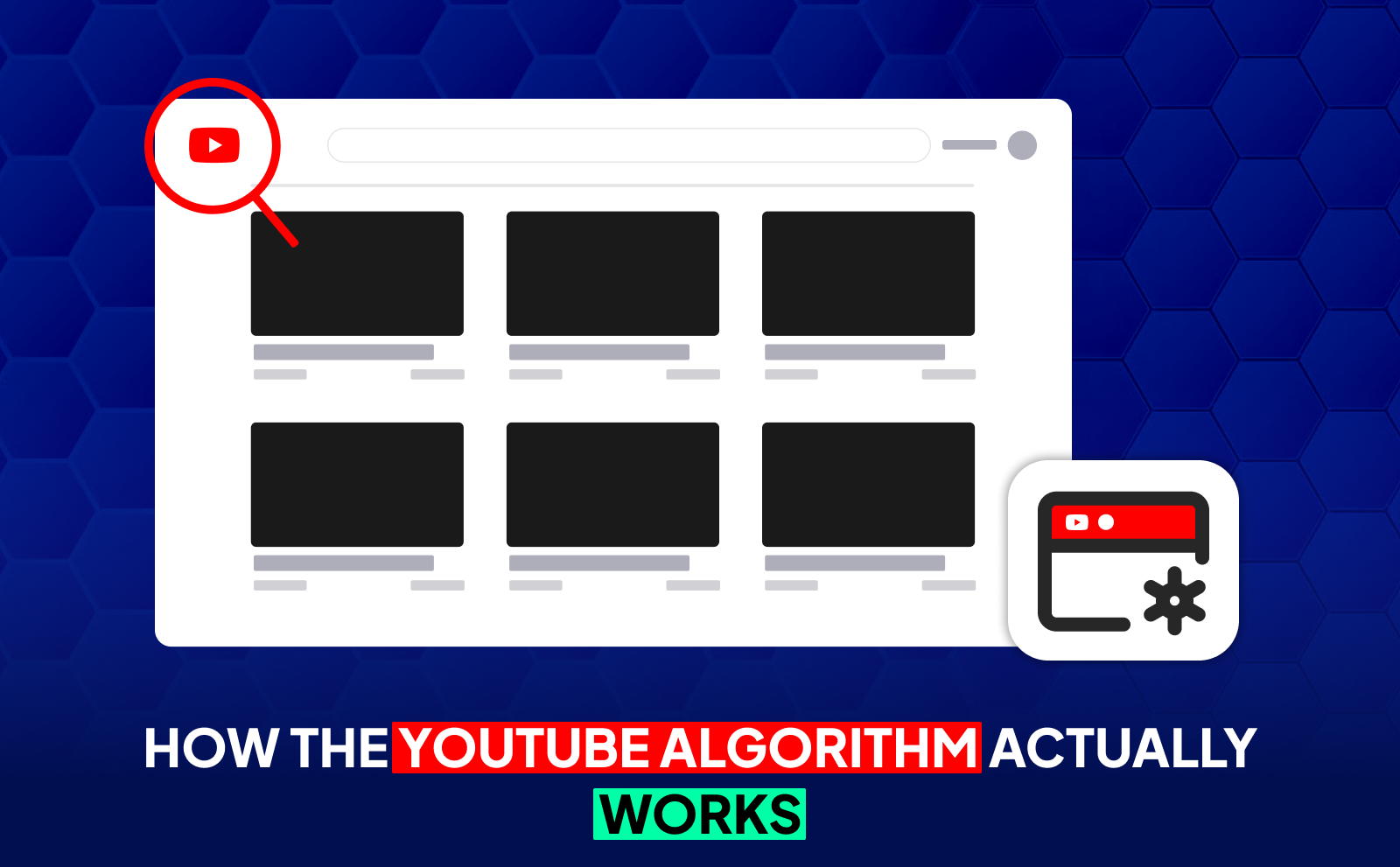
The algorithm isn’t a magical monster deciding who wins or loses. It’s just a recommendation system that tries to show people what they’re most likely to watch, click, and enjoy. It studies how viewers behave on your video: do they click, do they watch for long, do they leave early, do they go watch more of your videos afterward? The videos that create the strongest viewer behavior get pushed to more people. That’s it. It doesn’t care about posting daily, using perfect tags, or hitting some secret trick.
YouTube also doesn’t promote your channel. It promotes individual videos. If one video performs well, it’ll push that video, not all your uploads. This is why some creators go viral from a single upload even if their channel has nothing else on it. And it’s also why consistency matters: the more good videos you make, the more chances you give the algorithm to find a winner. Think of YouTube as a machine that reacts to viewer behavior. not a system you can hack with shortcuts.
Common Misconceptions About Getting Views On YouTube
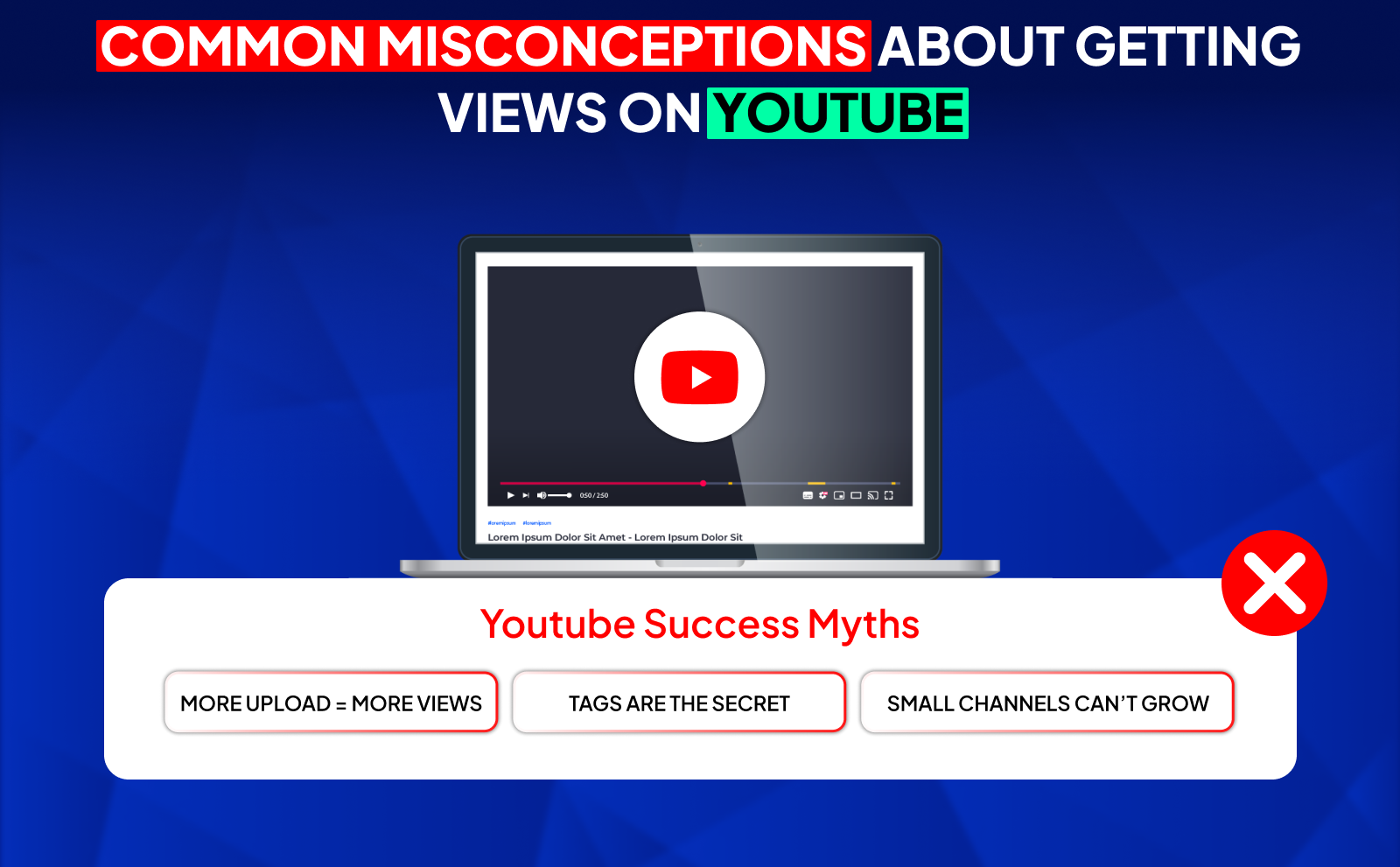
One big misconception is that uploading more videos automatically leads to more views. If the videos aren’t interesting, no amount of quantity will help. It’s always quality of ideas over quantity of uploads. Another misconception is that tags, hashtags, descriptions, or keywords are the “secret sauce.” They barely matter. Even YouTube employees have confirmed that tags have almost zero impact today. What truly matters is whether people click and keep watching. Everything else is decoration.
Another common myth is that small channels have no chance because “the algorithm favors big creators.” This is false. YouTube only cares about how viewers react in real time. If your video performs better than a big creator’s video in the same topic, your video gets recommended over theirs. That’s why new channels go viral every single day. The real challenge isn’t size. it’s making videos that hold attention. Once you understand that, YouTube becomes less about luck and more about making the right kind of content.
Poor Video Optimization: The #1 Reason You’re Not Getting Views On YouTube

When creators ask “why is my YouTube channel not getting views?” The answer is almost always poor video optimization. YouTube has more than two billion monthly active users, but they won’t find your content if the platform can’t understand what your video is about. If your title, thumbnail, tags, and description don’t clearly communicate the topic, YouTube struggles to put your video in front of the right people. This is one of the main reasons so many creators end up saying their YouTube videos are not getting views even though the content might be good.
The algorithm relies heavily on clear metadata. When your optimization is weak, YouTube can’t slot your video into the right category, which means it won’t appear next to similar videos and won’t show up in search. That’s why improving optimization is the first step in figuring out how to get views on YouTube consistently. If YouTube doesn’t know what your video is about, it simply won’t recommend it no matter how much effort you put into filming or editing.
Weak Titles That Don’t Attract Clicks
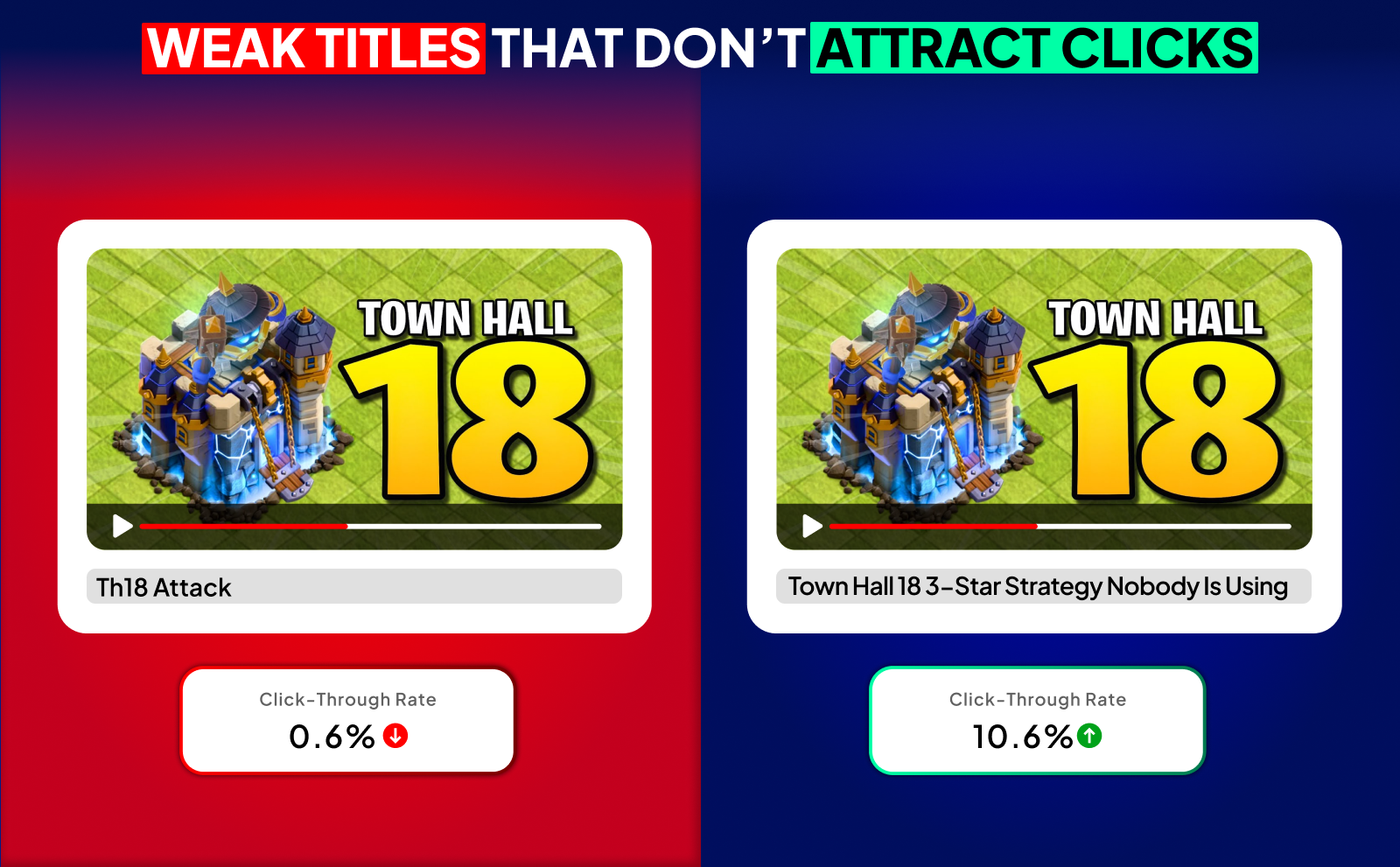
A weak title kills your video before it even starts. Click-through rate is one of the strongest YouTube video stats, and if people don’t click, the platform assumes the video isn’t interesting. Even if your content is amazing, a boring title means viewers scroll right past it. This is why many creators wonder “why my YouTube video is not getting views” when the real issue is simply that the title didn’t make anyone curious enough to open it.
Good titles use simple language that sparks emotion, curiosity, or a clear benefit. When you’re trying to learn how to get more YouTube views, start by fixing your titles. A strong title makes people feel they’ll gain something by clicking. whether it’s entertainment, knowledge, or a solution to a problem. If your title doesn’t promise anything valuable, you’ll continue getting no views on YouTube, even if the video is solid.
Missing Or Incorrect YouTube Tags And Keywords
Tags aren’t as powerful as they used to be, but they still help YouTube understand your video. If your tags are missing, irrelevant, or too broad, YouTube might recommend your video to the wrong audience, which leads to low watch time and fewer views. When tags are done properly, they help YouTube categorize your video and match it with similar content. It won’t drastically boost your reach, but it stops your video from getting lost.
Keywords matter even more. Putting the right keywords in your title, description, and tags helps your video appear in search results. If you’re wondering how to increase views on YouTube or why your YouTube videos are not getting views, keyword optimization is a small but important part of the process. It helps YouTube figure out what value your video provides, which increases your chances of showing up in relevant searches.
Poor Video Descriptions That Hurt Discoverability
Your description is one of the most underrated parts of your video. It gives YouTube context. what the video teaches, who it’s for, and why it matters. A weak description makes your content harder to index, which lowers your chances of appearing in search and suggested videos. If you’re struggling with videos not appearing on YouTube, a missing or messy description is often the culprit.
A good description repeats your main keyword naturally and explains the value of the video in simple terms. When done right, it boosts your discoverability and helps you show up in more search queries. This is crucial for anyone trying to learn how to get views on YouTube or improve their overall YouTube video statistics. If viewers and the algorithm both understand your video, your visibility naturally improves.
Technical Issues: Why YouTube Videos Are Not Getting Views Despite Good Content
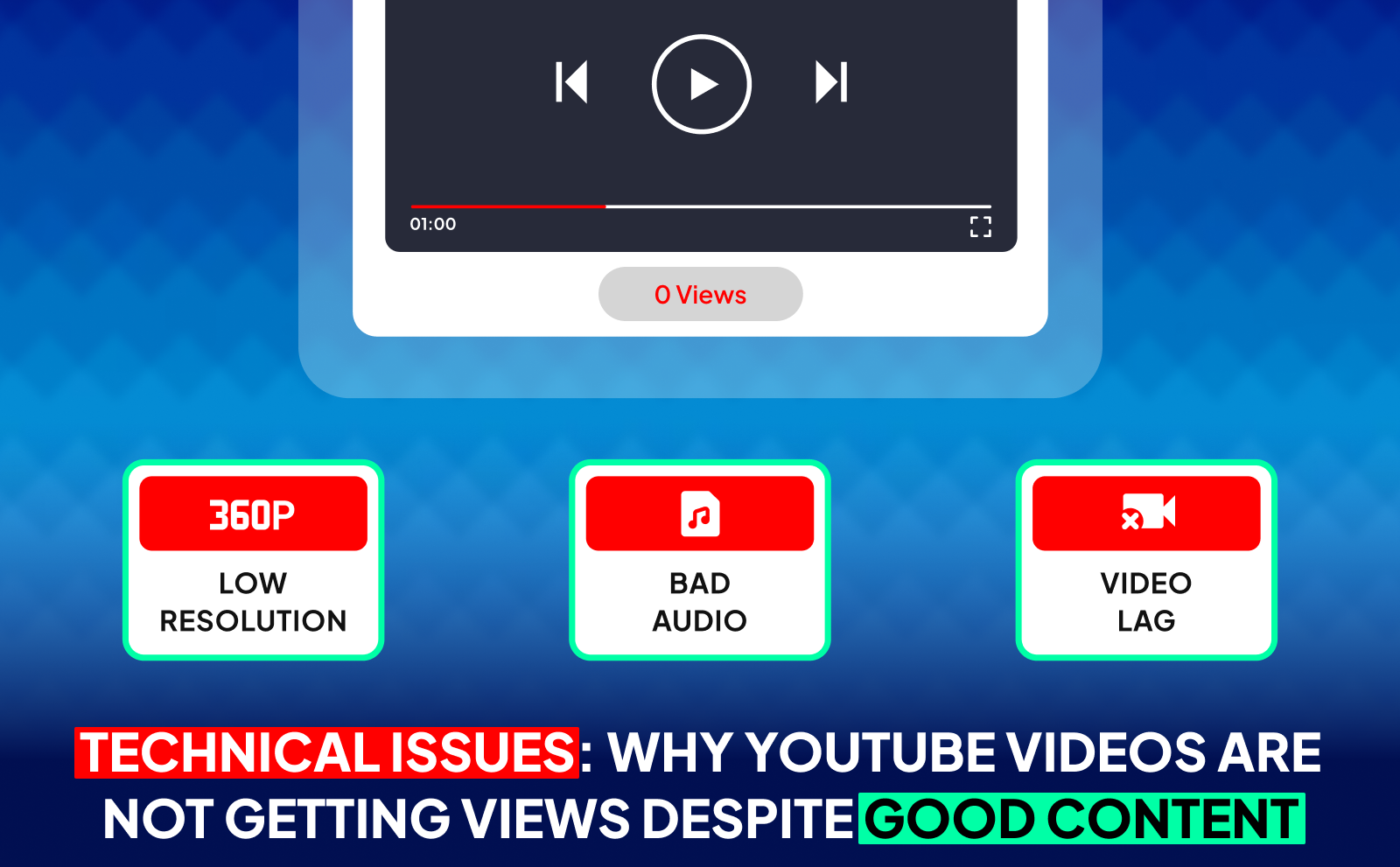
Sometimes the content is good, but technical issues quietly sabotage the video. Maybe the resolution is too low, maybe the audio cracks, or maybe the video lags. These things instantly raise your bounce rate because viewers leave the moment the experience feels uncomfortable. Even if the idea is strong, poor technical performance can stop YouTube from recommending the video further.
Another hidden issue is processing delays or upload glitches. Sometimes YouTube takes longer to generate HD versions, and if viewers click early and see a low-quality version, they leave immediately. This makes creators think their YouTube videos are getting no views, when in reality the upload didn’t fully process. These small technical errors can ruin a video’s performance before it even has a chance.
Poor Video And Audio Quality Driving Viewers Away
If your video looks blurry or the audio is echoey, people leave within seconds. YouTube’s algorithm sees this quick drop-off and assumes your content isn’t good, which kills your reach. This is one of the biggest reasons behind the common complaint: “why my YouTube video is not getting views?” Even a great idea can’t survive bad production quality.
Good audio matters even more than visuals. Viewers can forgive average video quality, but they won’t tolerate unclear sound. If you want to figure out how to get more YouTube views, upgrading your microphone and lighting is one of the simplest ways to instantly boost viewer retention and make your channel look more professional.
Videos Not Appearing On YouTube Due To Visibility Settings
Sometimes you’re getting no views on YouTube simply because the video is unlisted, private, or blocked in certain regions. This is more common than people realize, especially for new creators. When your videos are not appearing on YouTube, always check if your upload accidentally got restricted due to copyright claims, age limits, or visibility settings.
There are also cases where the video appears on your channel but doesn’t show up in search for hours due to indexing delays. YouTube needs time to analyze your video and decide where it belongs. If this happens, don’t panic, it’s not a penalty. It’s just the system processing your content. But if settings are wrong, no amount of optimization will help until you fix them.
Upload Errors And Processing Problems
Upload errors can silently destroy your video’s performance. Sometimes the file fails to process in HD, sometimes the audio becomes desynced, or parts of the video get corrupted. When viewers click your video and see poor quality or missing sections, they instantly back out. This sends terrible signals to the algorithm and leads to YouTube videos getting no views after the first few minutes.
Always check that your video has fully processed before promoting it. Make sure the HD versions are available and the thumbnail displays correctly. These simple checks can save you from a lot of frustration and prevent unnecessary dips in your YouTube viewership stats.
Content Problems That Result In Getting No Views On YouTube
If your content doesn’t clearly offer something valuable: entertainment, education, storytelling, or problem-solving, viewers won’t stay. The algorithm measures this drop-off and quickly stops recommending the video. This is why many creators say “my YouTube videos are not getting views” even though they upload consistently. The content might be there, but the value isn’t obvious.
Every video needs a strong reason for viewers to watch. Think of value as a promise: what will the viewer gain from spending their time here? If you can’t answer that in one sentence, the content won’t stick. Solving this is key to learning how to get views on YouTube in a predictable way.
Your Video Provide No Clear Value To Viewers

Value doesn’t mean complicated information, it means clarity. If viewers can’t tell within the first ten seconds what they’re getting, they click off. And when they click off, YouTube stops recommending your videos. This is one of the biggest reasons behind YouTube videos getting no views even when they’re well-edited.
Make your intro quick and direct. Tell viewers what they will learn, how it helps them, or what story you’ll tell. When the value is obvious, people stay longer, and your YouTube video statistics improve instantly because watch time rises.
Video Length And Pacing Issues

Many videos fail simply because they drag on too long or move too slowly. If your pacing doesn’t match your storytelling, viewers lose interest. Poor pacing is one of the most common reasons why your YouTube video is not getting views after the first hour. The algorithm tests it with a small audience, sees the drop-off, and stops pushing it.
Shorter videos aren’t always better, but tighter videos always are. If the content feels slow or repetitive, people click away. Fix the pacing and you’ll instantly see better retention metrics, which leads to more recommendations and more traffic.
Targeting The Wrong Audience For Your Content
If you make great content but people still don’t watch, you’re probably targeting the wrong viewers. When YouTube shows your video to an audience that doesn’t care about the topic, they ignore it or leave early. This confuses the algorithm and results in no views on YouTube, even if the idea is strong.
Understanding your audience is essential. Once you create videos for people who actually want that type of content, your click-through rate, watch time, and engagement all rise naturally. This is how you build a cycle of consistent growth and learn how to get more YouTube views over time.
Channel Level Issues: Why My YouTube Video Is Note Getting Views Consistently
Consistency is a huge part of growth. When you upload randomly, YouTube can’t predict your niche or viewer behavior, so it recommends your videos less. This leads to unpredictable performance where some videos get traction and others die instantly. Many creators think the algorithm is punishing them, but really the YouTube video stats simply reflect a lack of rhythm.
YouTube likes channels that build habits with their audience. When people know what to expect, they return more often. Returning viewers are one of the strongest signals in the algorithm, and they’re a major factor in how to get more YouTube views over the long term. Without consistency, those signals disappear.
Inconsistent Posting Schedule
When you post once in a while, viewers forget about you. And when they forget, your engagement drops. This tells the algorithm there’s no strong community around your content. Even if you upload a great video, your past inactivity can slow it down. This is why YouTube videos are not getting views consistently. The audience isn’t being trained to expect your content.
A simple weekly schedule fixes this. You don’t need to upload daily; you just need to be predictable. When your uploads become part of viewers’ routines, YouTube starts recommending your content more, and your YouTube video statistics trend upward.
Lack Of Channel Branding And Identity
A channel with no identity is forgettable. If your banner, profile picture, and thumbnails don’t follow a consistent style, viewers don’t recognize you. Recognition is important because it makes people more likely to click when they see your video appear again. Without branding, your content blends in with thousands of similar videos, causing lower click-through rates.
Branding also builds trust. When your visuals look clean and intentional, people assume your content is reliable. This is a small but powerful factor in how to get views on YouTube and build long-term growth. Strong identity leads to stronger viewer memory. and stronger viewer memory leads to more clicks.
Ignoring YouTube Video Statistics And Analytics
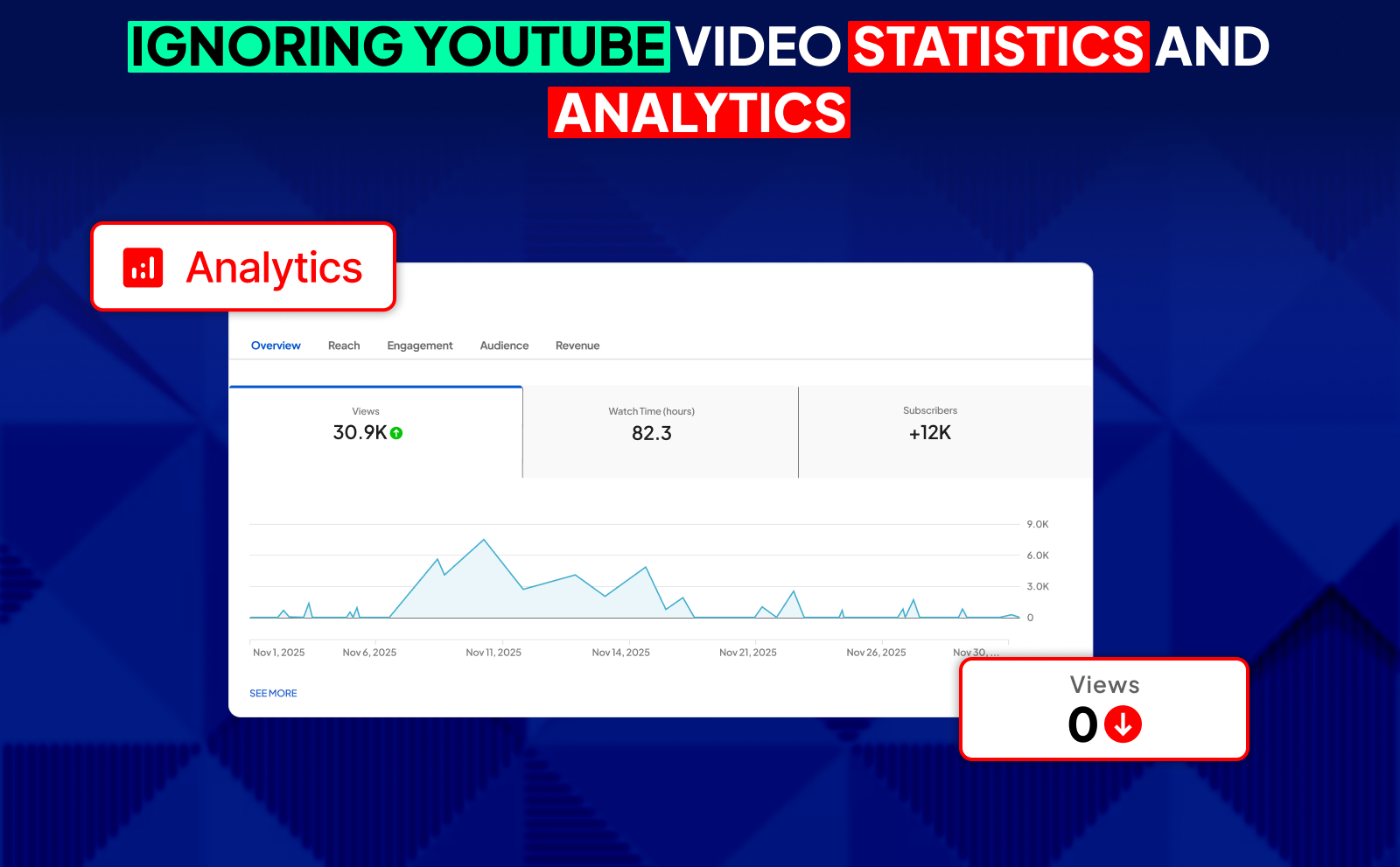
Your analytics show exactly why your videos perform the way they do. If you ignore them, you lose the ability to understand what’s working and what’s not. Things like click-through rate, watch time, retention graphs, and audience demographics explain why your YouTube videos are getting no views or why certain uploads perform better.
The creators who grow the fastest are the ones who study their numbers and adjust. You don’t need to be technical, you just need to know what parts of your video cause drop-offs. Once you fix those weak points, your retention improves, and so does your reach. Learning your analytics is one of the quickest ways to improve how to get more YouTube views.
Engagement And Promotion Failures Leading To YouTube Videos Getting No Views

YouTube is a social platform. If you don’t interact with your viewers, reply to comments, or build a community, your engagement drops. Low engagement means fewer signals telling the algorithm that people care about your content. This makes it harder for the video to spread, and it’s one of the biggest hidden reasons why YouTube videos get no views after the first day.
Promoting your video outside YouTube is also essential. Platforms like Instagram, TikTok, Reddit, and Twitter can drive early traffic. Early traffic boosts your video’s performance and gives YouTube positive data. This is especially helpful for creators trying to figure out how to get views on YouTube when starting from zero.
Not Engaging With Your Audience
Engagement isn’t optional anymore, it’s part of the algorithm. When you reply to comments and talk to viewers, you build loyalty. Loyal viewers click faster, watch longer, and share your content. This creates a snowball effect that improves your YouTube viewership stats and helps your videos rank higher.
Ignoring your audience does the opposite. If people feel their comments don’t matter, they stop interacting. Lower interaction makes the video feel “dead” to the algorithm, and it stops recommending it as aggressively. A few simple replies can literally save a video.
Failing To Promote Outside YouTube
A lot of creators think their videos will magically spread with no outside help, but early traffic is everything. Platforms like TikTok, Instagram Reels, or Twitter can send the first few hundred viewers to your video, which tells YouTube your content has potential. If you skip this, your video might never escape the early “testing phase,” leaving you with no views on YouTube.
Sharing your content doesn’t have to feel spammy. You can post short clips, teasers, or behind-the-scenes moments. These tiny pushes help your video get noticed faster and increase your chances of hitting the recommendation system early.
Missing Opportunities For Collaboration
Collaborating exposes your channel to new audiences who already trust the creator you’re working with. This instantly boosts your visibility, subscriber count, and engagement. If you’re wondering how to get more YouTube views, collaboration is one of the most reliable shortcuts.
Even small collaborations matter. You don’t need to work with big creators, just people in your niche with active communities. When audiences overlap, your videos have a much higher chance of being clicked and watched, and this creates stronger signals in your YouTube video statistics.
How To Get Views On YouTube: Proven Strategies That Work

Getting more views isn’t about some hacks. it’s about understanding viewer behavior. If your thumbnail grabs attention, your title sparks curiosity, and your intro delivers value fast, you’ll naturally get more traction. These three things alone determine most of your success on the platform. If viewers stay longer than average, YouTube starts recommending your video everywhere.
The second key is making content people actively search for or enjoy binge-watching. When you combine search-friendly topics with high retention, you create a powerful loop. This is the foundation of mastering how to get views on YouTube even as a small creator. It’s simple: make people click, and make them stay.
How To Increase Videos On YouTube Through SEO Optimization

SEO helps YouTube understand your video so it appears in more search results. Adding clear keywords, strong descriptions, accurate tags, and helpful timestamps makes it easier for viewers to find your content. When your optimization is clean, your video shows up in YouTube search, Google search, and even recommended videos related to your topic.
Good SEO also improves your long-term traffic. Some videos continue getting views for years because they’re well-optimized and match what people search for. If you’re trying to figure out how to increase views on YouTube, SEO is one of the easiest and most consistent strategies to start with.
How To Get More YouTube Views With Better Thumbnails
Thumbnails are the true difference-maker. A thumbnail that instantly communicates emotion, curiosity, or a clear benefit can double your click-through rate. And when your CTR goes up, YouTube pushes your video to more people. This is why improving thumbnails is one of the fastest ways to learn how to get more YouTube views without changing your content.
You don’t need to be a designer, you just need clarity. Close-up faces, bold text, strong contrast, and a simple background usually perform better. The thumbnail should tell a story on its own. If viewers can’t understand what the video is about from one quick glance, they won’t click.
Building A Loyal Subscriber Base For Consistent YouTube Viewership Stats
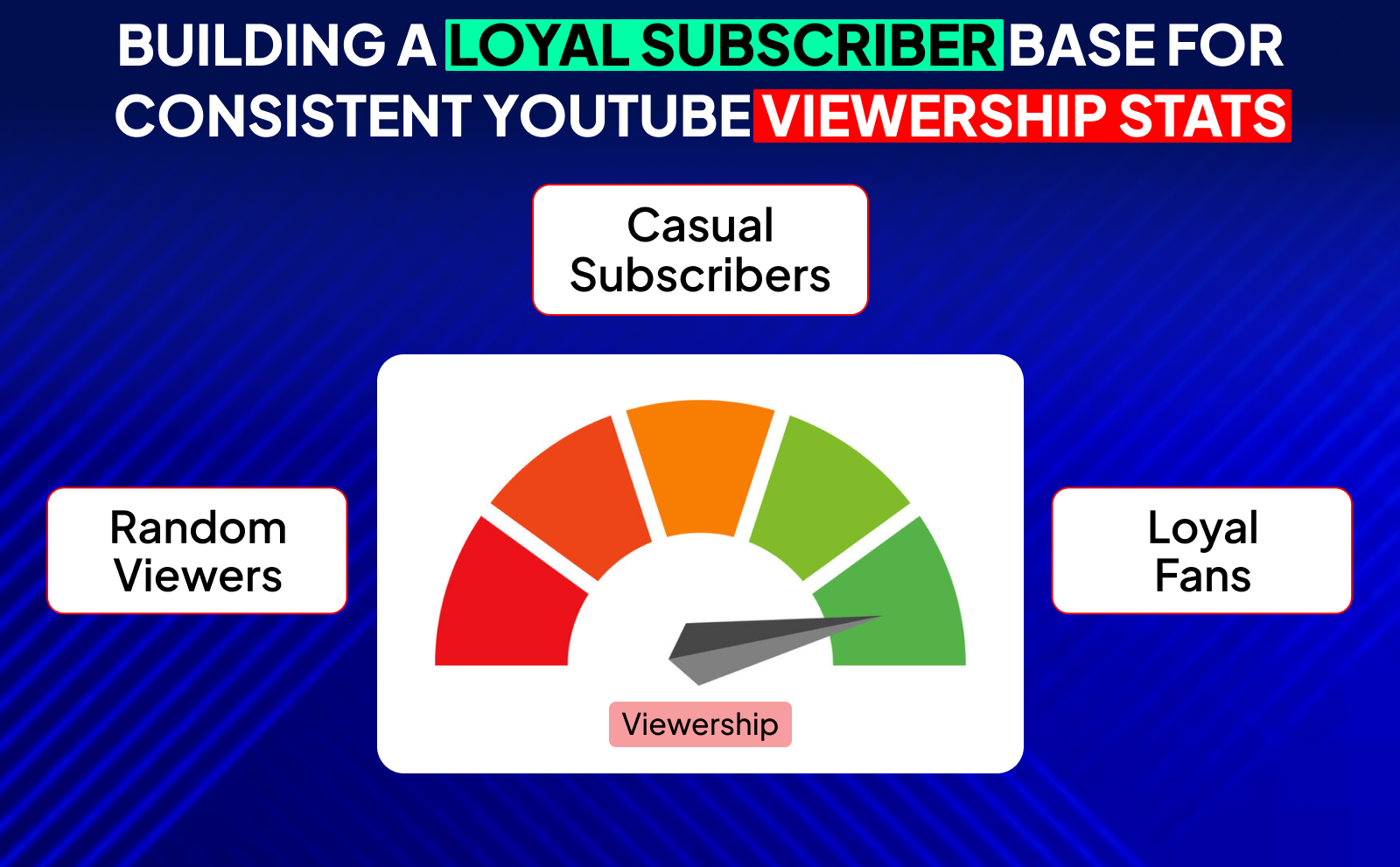
Subscribers are important not because they guarantee views, but because they create momentum. When you have loyal viewers who watch everything you upload, YouTube gets early positive signals. This early engagement helps the algorithm push your video to a wider audience. Strong subscriber loyalty leads to consistent and predictable YouTube viewership stats.
To build a loyal base, you need to give viewers a reason to stay. Tell stories, be relatable, show your personality, and speak directly to your audience. When people feel connected to you, they stick around for the long term, and that’s how you create stable growth instead of random spikes.
Conclusion
At the end of the day, getting views on YouTube isn’t about luck. it’s about understanding how viewers think and how the platform reacts. When you improve your titles, thumbnails, pacing, optimization, and overall viewer experience, the algorithm naturally rewards you because it’s built to push videos people actually enjoy. Most channels don’t fail because the creator isn’t talented; they fail because the early signals, clicks, watch time, engagement, aren’t strong enough. Fix those, and everything else becomes easier.
YouTube is competitive, but it’s also predictable once you understand the system. Focus on clarity, value, and retention. Study your analytics, improve your packaging, and make every video slightly better than the last. When you do that consistently, your channel builds momentum, your YouTube video statistics improve, and your content starts reaching the right audience more often. Growth becomes less stressful and a lot more fun.
FAQs
Why Are My YouTube Videos Not Getting Any Views Even Though I Upload Regularly?
Because consistency alone isn’t enough. Weak titles, thumbnails, or retention usually hold your videos back.
How Long Does It Take For A New YouTube Video To Start Getting Views?
Most videos get initial views within minutes, but real traction can take hours to 48 hours.
What Are The Most Important YouTube Stats I Should Monitor?
Click-through rate, watch time, audience retention, and returning viewers.
Why Is My YouTube Channel Not Getting Views On New Uploads But Old Videos Still Get Views?
Your older videos likely rank in search, while new ones aren’t getting strong early signals yet.
How Many YouTube Monthly Adjective Users Should I Expect To Reach As A Small Channel?
A tiny fraction at first. your reach grows based on performance, not channel size.
What YouTube Video Stats Indicate That My Content Is Improving?
Higher retention, higher CTR, longer watch time, and more repeat viewers.
Why Am I Getting No Views On YouTube Shorts?
Your hook isn’t strong enough in the first 1–5 seconds, so viewers swipe instantly.
How Can I Check If My Videos Are Not Appearing On YouTube Searches?
Use YouTube Search Console in Analytics under “Traffic Sources, YouTube Search.”
What’s The Minimum Video Quality Needed To Avoid Getting No Views On YouTube?
1080p with clear audio is the safe baseline. Audio matters more than visuals.
How Do YouTube Video Statistics Help Me Understand Why I'm Not Getting Views?
They show exactly where viewers click, drop off, or lose interest, so you can fix what’s hurting performance.
